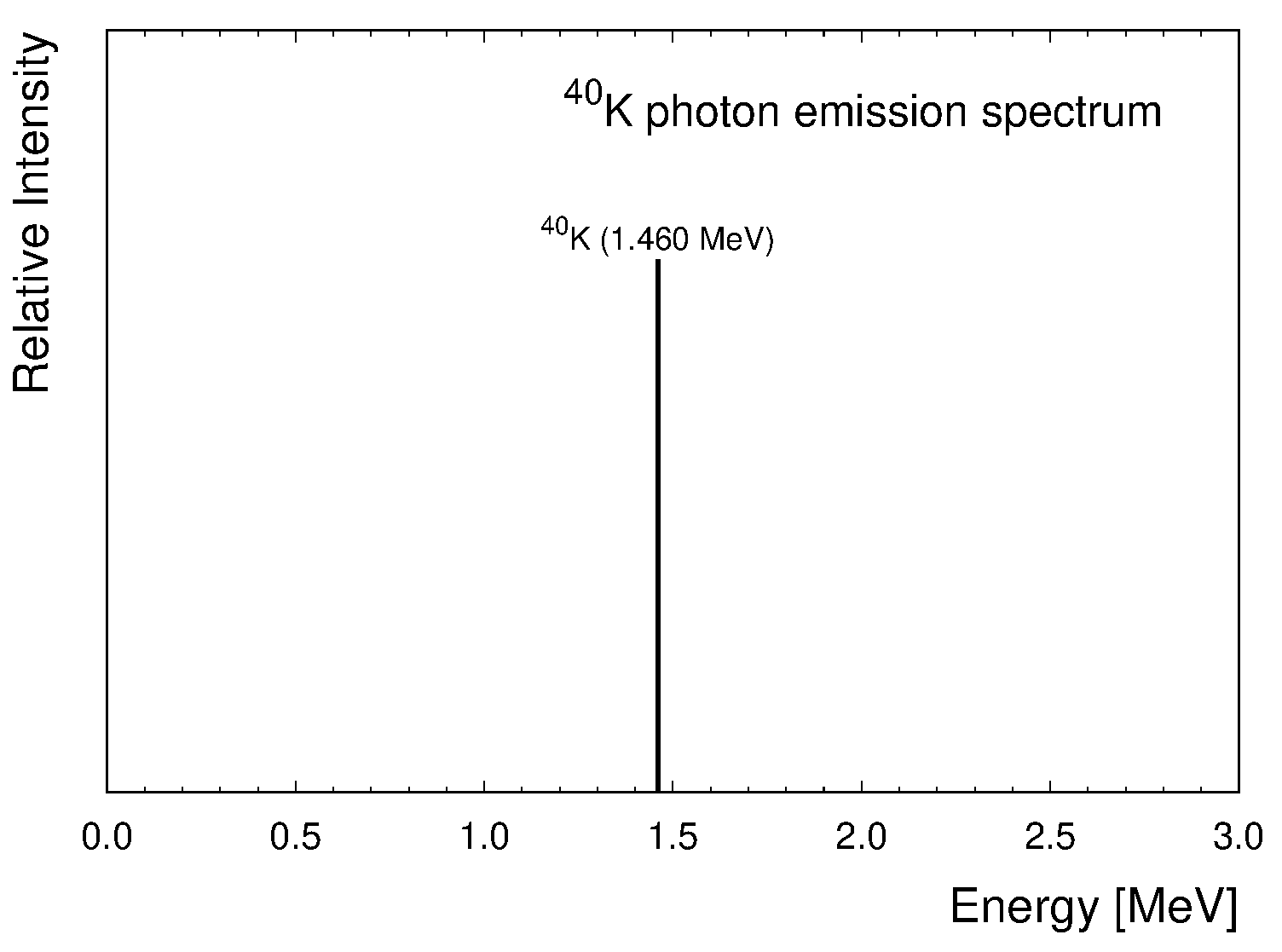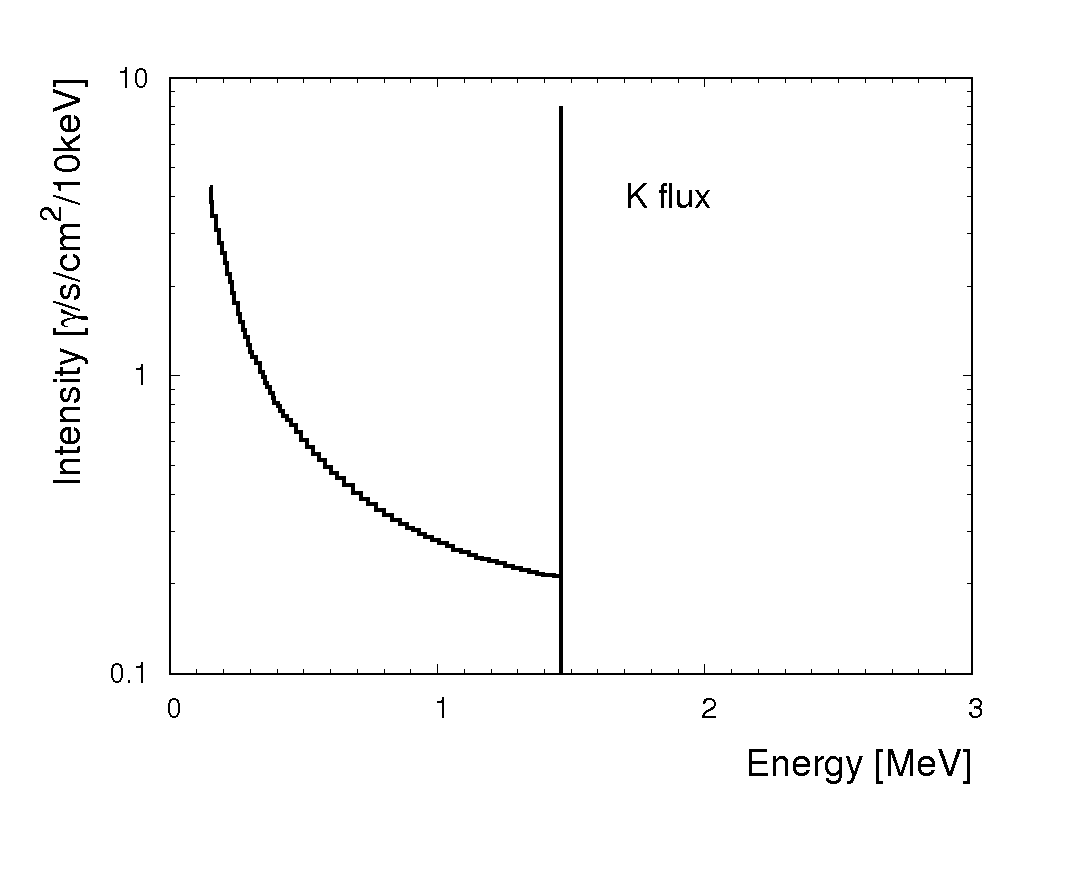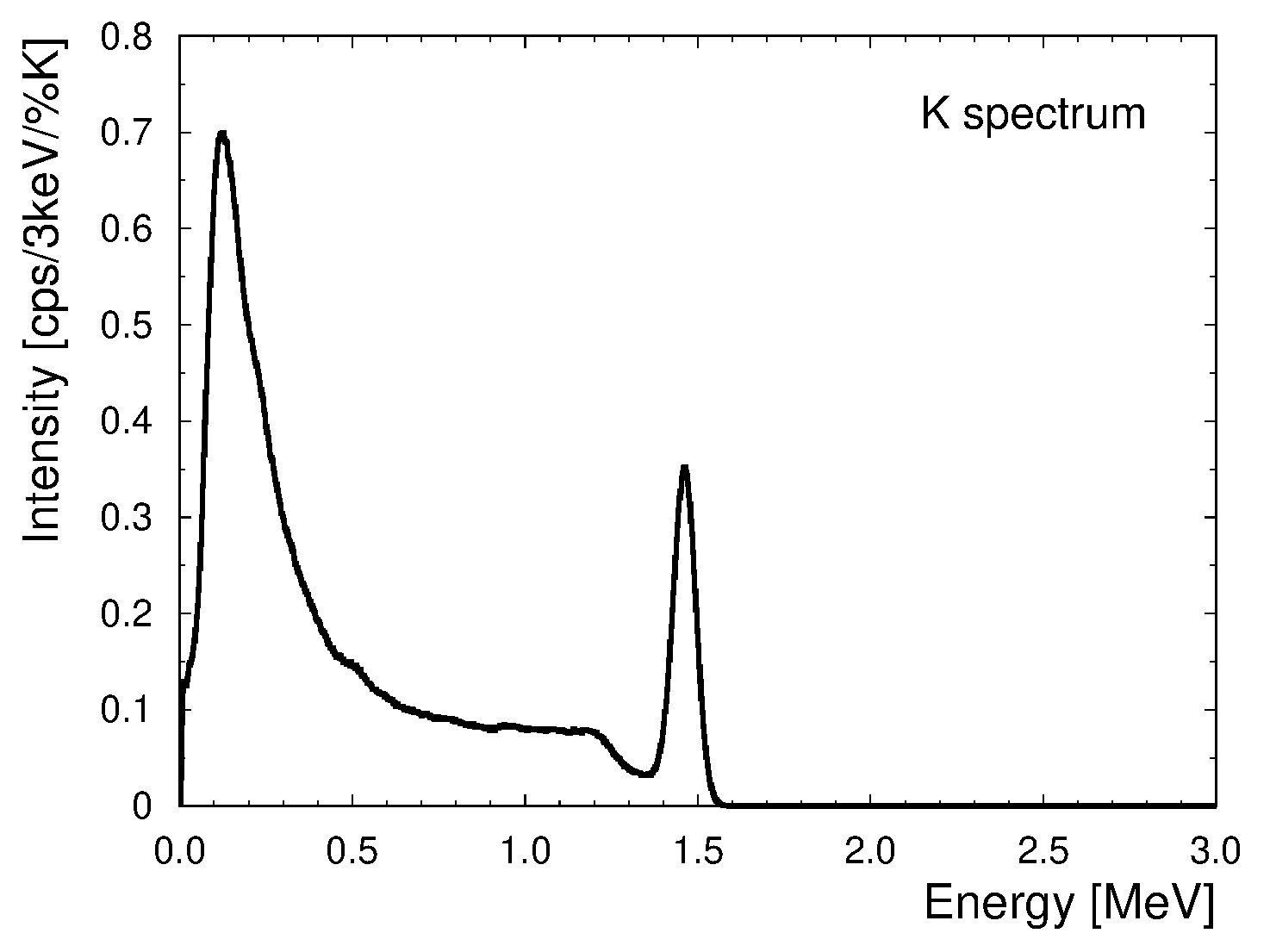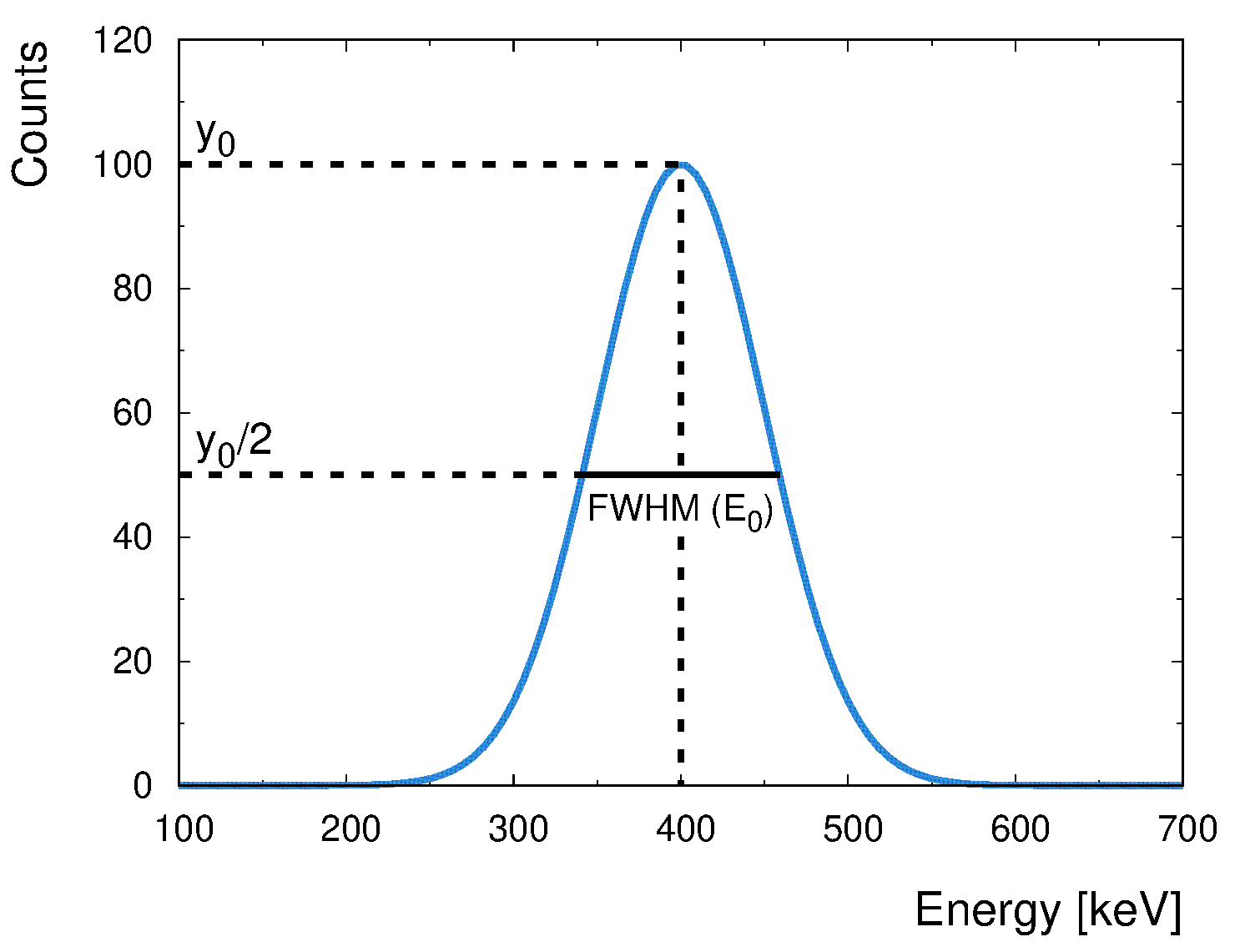Interaction of γ-rays with matter
The three main interactions of gamma-rays in matter are:
- Photoelectric effect
- Compton scattering
- Pair production
Every one of these processes lead to a partial or complete transfer of the gamma-ray photon energy to the electron as kinetic energy. They result in sudden and abrupt changes in the gamma-ray photon history: in these processes the photon either disappears entirely via absorption or is scattered through a significant angle.
The photoelectric effect is the process by which the energy of the incident photon is absorbed by an atom and one of the atom's electrons is released, creating a positive ion and a free electron. Photoelectric absorption can occur when the energy of the incident photon is larger than the binding energy of the shell electron. The electron is ejected from its atomic shell and acquires a kinetic energy Ekin equal to:
where Eγ is the energy of the incident photon and φ the electron binding energy, i.e. the energy required to free the electron from the atomic bond. This interaction mechanism is the dominant one at photon energies of few hundreds of keV.

The Compton scattering is the dominant interaction between a ~ 1 MeV gamma photon and an electron. The incoming gamma photon is deflected through an angle θ with respect to its original direction and it transfers a portion of its energy to the electron. As the photon energy is higher than the electron binding energy, the latter can be ignored and the electrons can be considered essentially free. By applying energy and momentum conservation, the relation between the gamma energy before (Eγ) and after (Eγ') the collision can be derived:
where mec2 is the electron rest mass energy, equal to 511 keV.
Because all scattering angles are possible, the energy transferred to the electron can vary from zero to a large fraction of the gamma-ray energy. Emax, the maximum kinetic energy that a Compton scattered electron can acquire, results from a "head-on" collision, which happens when the gamma photon is scattered backwards (θ = 180°). The Compton edge represents this maximum kinetic energy transferred to the electron.

The process of pair production involves the transformation of a photon into an electron-positron pair, which is energetically possible only if the gamma-ray energy exceeds twice the rest-mass energy of an electron (1.02 MeV). As a practical matter, the probability of this interaction remains very low until the gamma-ray energy approaches several MeV; pair production is therefore predominantly confined to high-energy gamma-rays. During the interaction (which must take place in the coulomb field of a nucleus), the gamma-ray photon disappears and is replaced by an electron-positron pair. Any the photon excess energy, above the 1.02 MeV required to create the pair, becomes kinetic energy shared by the positron and electron. Because the positron will subsequently annihilate after slowing down in the absorbing medium, two annihilation photons are normally produced as secondary products of the interaction.

The total photon attenuation
The total interaction probability for a photon propagating in matter is the sum of the individual interaction probabilities associated with the photoelectric, Compton and pair production interaction mechanisms.
Given a collimated photon beam of energy E traversing a material, the total number of photons is reduced by the number of interactions. According to the exponential law:
where:
- I (# of photons) is the attenuated gamma-ray beam intensity;
- I0 (# of photons) is the incident gamma-ray beam intensity;
- µ(E) (cm-1) is the linear attenuation coefficient of the absorber for the gamma photon energy E;
- µ/ρ (E) (cm) is the mass attenuation coefficient of the absorber for the gamma photon energy E;
- x (cm) is the thickness of the absorbing material;
- ρ (g/cm3) is the density of the traversed material.
For this reason, a beam of photons energy is not degraded as it passes through some thickness of matter, but it is only attenuated in intensity. The photons which pass straight through some thickness of matter are the ones which have not suffered any interaction at all and which retain their original energy. The total number of photons is however reduced by the number of photons which have interacted.
Attenuation properties of absorbing materials are typically expressed in terms of the mass attenuation coefficient µ/ρ (cm2/g), corresponding to the ratio between the linear attenuation coefficient µ, which is independent from material density and slightly dependent on its chemical composition, and the material density ρ. From the graph of the mass attenuation coefficient as function of the photon energy it's possible to notice that the photoelectric effect, Compton scattering and pair production are the dominant interaction mechanisms respectively at low (Eγ < 0.1 MeV), medium (0.1 < Eγ < 10 MeV) and high (Eγ >10 MeV) gamma energies.

The inverse of the linear attenuation coefficient µ corresponds to the photon mean free path λ = μ-1(cm), i.e. the average distance the gamma-ray intensity is reduced by a factor e. Alternatively, it's possible to define the quantity λ1/2 = λ/ln2 which corresponds to the distance where the gamma-ray intensity is halved.

Features of γ-ray spectra
A gamma-ray spectrum is a histogram of the distribution of gamma events classified according to their energy. The gamma energy produced from the decay is discrete. Therefore, a gamma spectrum is ideally made up of a series of lines associated with specific nuclear transitions of individual radioisotopes. The energy of the gamma line corresponds to the energy gap between the two nuclear energy levels released as a gamma-ray line intensity is related to the probability of that specific transition occurring. For instance, in the 40K decay scheme only one gamma transition is involved, so the gamma spectrum of photons emitted in the 40K radioactive decay simply corresponds to one line.

When gamma-rays emitted by an bulk isotropically emitting source (such as 40K, 238U or 232Th distributed in the ground) start to propagate from their emission point, they can be deflected in their original direction and degraded in energy as a consequence of the interaction with the surrounding materials. For this reason, gamma-rays reaching the position of a given detector do not have their original discrete energy, resulting in a spectrum with a continuous energy distribution. This spectrum contains both gamma-rays at the original emission energy and gamma-rays at lower energies, the latter corresponding to those photons that underwent single or multiple Compton scattering from the emission to the detection point.

Once a gamma-ray flux with a characteristic energy distribution reaches a detector, the shape of the measured spectrum is obtained by convolving the former with the detector response function. The main features that characterize the detector response function are the efficiency (or sensitivity), which is an energy and angular dependent quantity that essentially quantifies the number of recorded events per photon impinging on the detector, and the energy resolution, which is responsible for the broadening of the sharp original gamma line into a bell shape. Each radionuclide generates a photopeak (full-energy peak) which has a centroid at the same energy of the gamma decay energy. The photopeaks are superimposed on the continuum of photons. This spectral shape is produced by photons escaping the detector volume after a partial energy deposit or entering with a degraded energy after an interaction with the external material.

Statistical processes in the detection system are responsible for the broadening of the gamma peaks in a real spectrum. In the case of scintillation detectors (see also Instrumentation), the conversion of gamma energy into scintillation light, the collection and conversion of scintillation light into an electrical pulse, and the amplification of the electrical pulse until the digitization stage, are all processes subject to statistical fluctuations. Two identical gammas fully-absorbed in the crystal may not produce exactly the same number of visible photons detected by the PMT; moreover, equal numbers and energies of visible photons will not produce the same number of electrons at the PMT output. Therefore, these electrical pulses have different amplitudes even though they originated from the same deposited gamma energy.
The result of these statistical processes is a distribution of pulse heights that is generally well described by a Gaussian distribution. Indeed, the energy resolution of the detector is defined as the ratio between the width of the Gaussian curve corresponding to the photopeak and the centroid value. It's standard practice to use as measure of the fractional energy resolution R the ratio between the Full Width at Half Maximum (FWHM) and the photopeak energy E0. Given a number of counts y0 in correspondence with the maximum of the Gaussian curve at energy equal to E0, the FWHM corresponds to the energy width of the photopeak (in keV) measured between those points for which the y-coordinate is half the maximum amplitude, i.e. y0/2.
It can be shown from pure statistical arguments that the fractional energy resolution R obeys to the following equation:
from which follows that the FWHM is typically a linear function of the gamma energy:

The fractional energy resolution also defines the ability of a given detector to distinguish adjacent photopeaks: the lower the fractional energy resolution, the better the capability of the detector to distinguish two gamma emissions with close energies.
Hence, a Gaussian peak with poor resolution has a large width because of recorded fluctuations from pulse to pulse from one gamma energy. As a result, two hypothetical photopeaks at close emission energies are hardly resolved by a detector having a poor energy resolution and the global profile shows a blurred shape in which the two peaks are almost indistinguishable.










